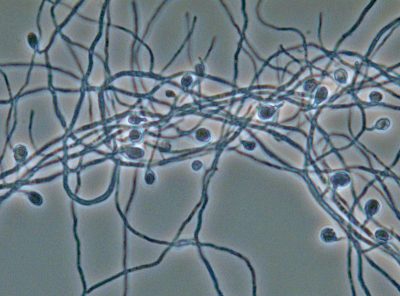
Welcome to the Frankia and Actinorhizal plant Website. This site provides information on the two partners in the symbiosis - actinorhizal plants and their bacterial symbionts - Frankia.
The Actinorhizal Symbiosis

Much of the new nitrogen entering temperate forests and marginal soils comes from bacteria, classified in the genus Frankia, that live symbiotically in root nodules on diverse shrubs and trees. Since Frankia belong to a group of bacteria known as actinomycetes, the nodules are termed “actinorhizal root nodules." Collectively, the symbiosis is a major source of new nitrogen entering soil in broad areas of the world. The plants involved have become increasingly important as pioneer species as climate changes threaten to remake the global landscape over the next several decades.
The Bacterial Symbiont - Frankia
Frankia sp. strains are filamentous bacteria that convert atmospheric N2 gas into ammonia in a process known as nitrogen fixation. Frankia fix nitrogen while living in root nodules on

“actinorhizal plants" and can supply most or all of the host plants' nitrogen needs. Consequently, actinorhizal plants colonize and often thrive in soils that are low in combined nitrogen. The availability of several Frankia genomes is helping to clarify the evolution of prokaryote/plant symbioses, environmental and geographical adaptation, metabolic diversity and horizontal gene flow among symbiotic prokaryotes.
Actinorhizal Plants
This website has been created by David Benson, Professor of Microbiology, Department of Molecular and Cell Biology, University of Connecticut, Storrs, CT.
The information in the site is free for use by individuals for educational or research purposes. Under no circumstances should the images be used for commercial purposes without prior permission of the owner. Please contact the person identified as the source for permission. Support for creating this site came from the NSF-Microbial Genomes Program.
Dr. David Benson
| Phone: | 860-486-4258 |
|---|---|
| E-mail: | david.benson@uconn.edu |
| Address: | 91 North Eagleville Road Unit 3125 Storrs, CT 06269 |
| More: | https://mcb.uconn.edu/person/david-benson/ |

